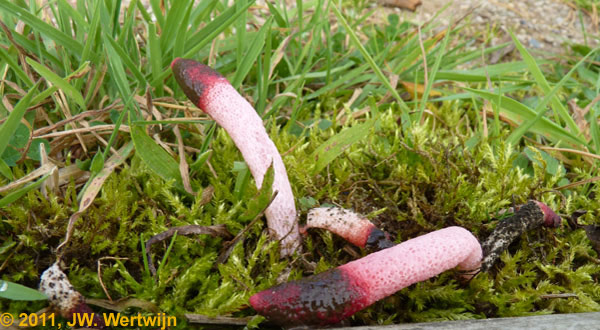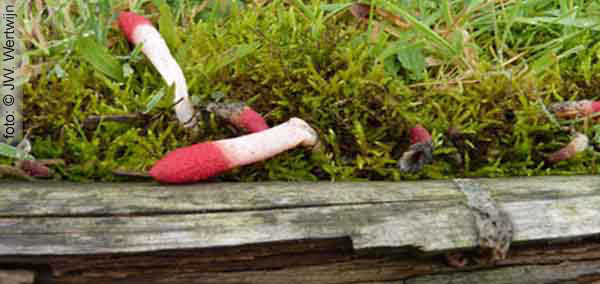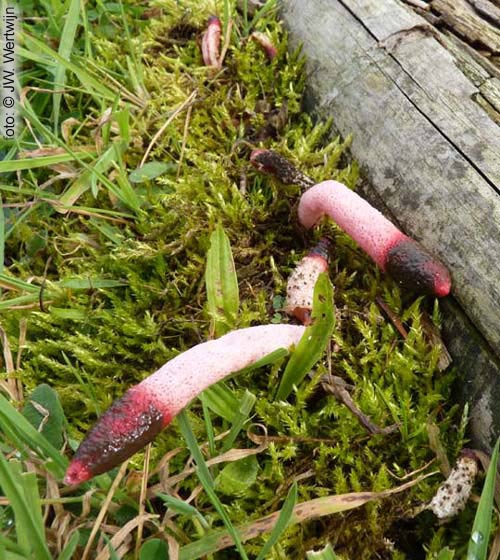
Photo: oktober 6, 2011, Nature bridge Zanderij Crailo |
Rosy stinkhorn
(Mutinus ravenelii)
NMV Ga 219020
|
Rosy stinkhorn has a receptacle dark carmine red or rose-red beneath the gleba.
It has narrow pores, usually not constricted below the fertile portion.
The gleba is thin, and is soon (3-4 days) disappearing.
It has a strong disagreeable smell, like cat dung.
Vemeulen (1999) call this dark carmine red color raspberry-red.
Rosy stinkhorn is rather rare in the Nederlands.
It grows on grained litter and on humous soil,
in parks, gardens, sphagnum reed-lands and hay-fields, also on shredded wood and straw.
From June till November (peak: september and end oktober).
In Park Spoorzicht in Diemen I've never seen stinkhorns.
To my opinion it means grained litter might be not the most important factor.
Henk van Halm, in Champignons in de Jordaan (1999, p. 165), is writing
that the sand below the litter is the important factor.
In all the places in the Amsterdam area where he has found Rosy stinkhorn, the places were sprayed with sand
in 1967. The sand used to develop the city was originally a bit calciferous and salted seasand.
It is possible that Rosy stinkhorn likes calciferous soil, but because of my observation of Rosy Stinkhorn at nature bridge
Zanderij Crailo (absolute non-calciferous sand) I suggest that Rosy stinkhorn prefers non acid soil.
Calc buffers acid rain, and buffers the acid from shredded wood.
|

Photo: oktober 9, 2011, Nature bridge Zanderij Crailo |

Photo:
oktober 6, 2011
Nature bridge Zanderij Crailoo
Hilversum |
 |
Literature:
Ewald Gerhardt, De grote Paddenstoelengids(voor onderweg), Tirion natuur, 2006, p. 618-621.
Hans Vermeulen, Paddestoelen, Schimmels en Slijmzwammen van Vlaanderen (determinatiesleutels aan de hand van kenmerken), De Wielewaal, Turnhout, 1999, p. 535
Rob Chrispijn e.a., Champignons in de Jordaan (De paddenstoelen van Amsterdam), Schuyt en Co, 1999, p.164-165.
|
Top
|